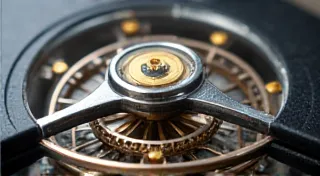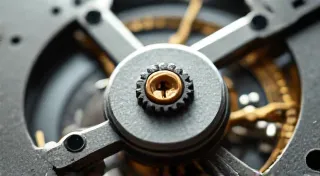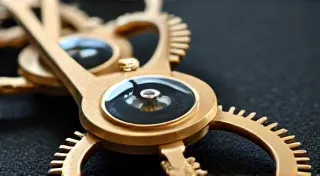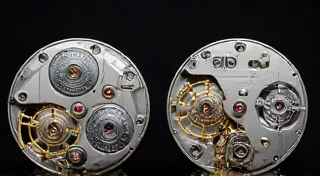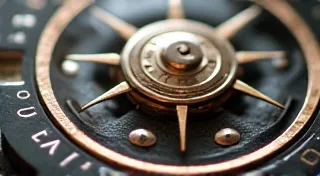A Comparison of Automatic vs. Manual-Wind Movements: Understanding the Differences
For watch enthusiasts, collectors, and those embarking on their journey into watch repair, understanding the intricacies of a watch's movement is crucial. At the heart of many mechanical timepieces lie two primary types: automatic (self-winding) and manual-wind. While both are fascinating examples of horological craftsmanship, they operate using different mechanisms and offer distinct advantages and disadvantages. This article provides a comprehensive comparison of these two movement types, exploring their mechanics, pros, cons, and suitability for different watch lovers.
The Mechanics of Manual-Wind Movements
Manual-wind, or hand-wound, movements are the older of the two, with a history tracing back centuries. The name is quite literal: they require the wearer to manually wind the mainspring using the crown to store energy. This winding process typically happens once a day (or every other day, depending on the movement’s power reserve). The mainspring, a tightly coiled strip of metal, provides the power that drives the gears and ultimately moves the hands of the watch.
The winding mechanism is relatively simple. When the crown is pulled out and rotated, it engages a ratchet wheel (also known as a pawl wheel). Each rotation of the crown advances the ratchet wheel, which in turn winds the mainspring tighter. A sprig (a small spring) prevents the ratchet wheel from unwinding as the crown is released.
Once wound, the mainspring’s stored energy is released slowly and steadily, powering the gear train. This gear train transmits the energy to the escapement, a critical component that regulates the release of energy, ensuring the accurate measurement of time. The escapement ticks at a precise rate (usually 2.5 or 3 times per second), producing the characteristic ticking sound of a mechanical watch. The artistry involved in crafting these movements and their decorative elements, like Geneva stripes or perlage, speaks volumes about the watchmaker’s skill; exploring watch movement decoration can add another layer of appreciation for the intricate details within these timepieces.
Understanding the History: Manual-wind movements were the only type available for hundreds of years. Their longevity and relatively simple construction made them reliable and cost-effective. Iconic timepieces from renowned brands throughout history almost exclusively featured manual-wind movements. The act of manually winding a watch is often considered a ritual, a connection to the traditional art of watchmaking.
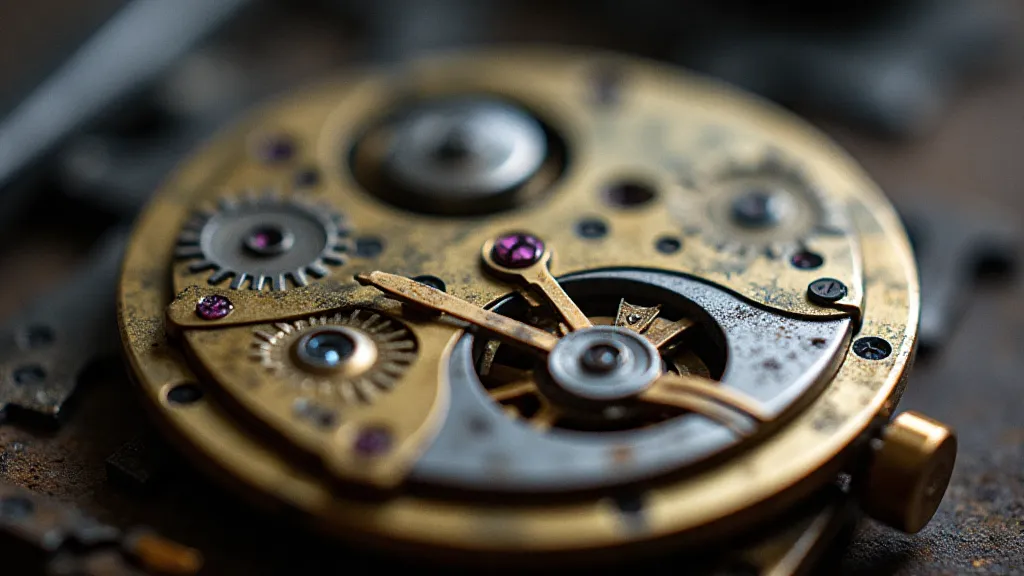
The Mechanics of Automatic Movements
Automatic, or self-winding, movements emerged in the 1920s, representing a significant innovation in watchmaking. They combine the functionality of a manual-wind movement with a system that automatically winds the mainspring using the motion of the wearer’s wrist.
The key difference lies in the addition of a rotor, a weighted metal disc that spins freely on its axis. As the wearer moves their wrist, the rotor swings and rotates a gear connected to the mainspring. This gear, known as an automatic winding mechanism, transfers the rotor's motion into winding the mainspring, eliminating the need for manual winding (though occasional winding may still be necessary if the watch is not worn regularly).
The automatic winding mechanism is designed to be bidirectional, meaning it winds the mainspring regardless of the direction of wrist movement. To prevent over-winding, which could damage the mainspring, most automatic movements incorporate a clutch system. This clutch allows the rotor to spin freely when the mainspring is fully wound.
The overall architecture of an automatic movement is similar to that of a manual-wind movement, comprising the mainspring, gear train, escapement, and balance wheel. However, the addition of the rotor and winding mechanism adds complexity and, often, size. The legacy of certain movements, like those produced by Universal Geneve, has significantly shaped the evolution of horological design; a deeper dive into Unitas movements offers a fascinating look at these innovations.
Automatic vs. Manual-Wind: A Detailed Comparison
To better understand the differences, let's break down the comparison into key categories:
1. Winding Frequency & Effort
- Manual-Wind: Requires daily winding. The ritual of winding can be appreciated by some but is a chore for others.
- Automatic: Requires no regular winding when worn daily. However, they can stop and require manual winding if left unworn for extended periods.
2. Size and Thickness
- Manual-Wind: Generally thinner and smaller than automatic movements, allowing for sleeker watch designs.
- Automatic: The rotor and winding mechanism add considerable height and thickness, often resulting in slightly bulkier watches.
3. Complexity and Cost
- Manual-Wind: Simpler construction often translates to lower production costs, potentially making them more affordable.
- Automatic: The addition of the automatic winding mechanism increases complexity and production costs, typically resulting in higher prices.
4. Accuracy and Performance
- Manual-Wind: Can be slightly more accurate than automatic movements in some cases, as there are fewer components that can introduce minor errors.
- Automatic: The constant motion of the rotor and gear train can sometimes introduce minor inaccuracies, though modern automatic movements are highly precise.
5. Aesthetics and Tradition
- Manual-Wind: Associated with a traditional and classic aesthetic. The winding ritual is often seen as a connection to the history of watchmaking.
- Automatic: Often perceived as a modern and innovative choice, showcasing advanced engineering.
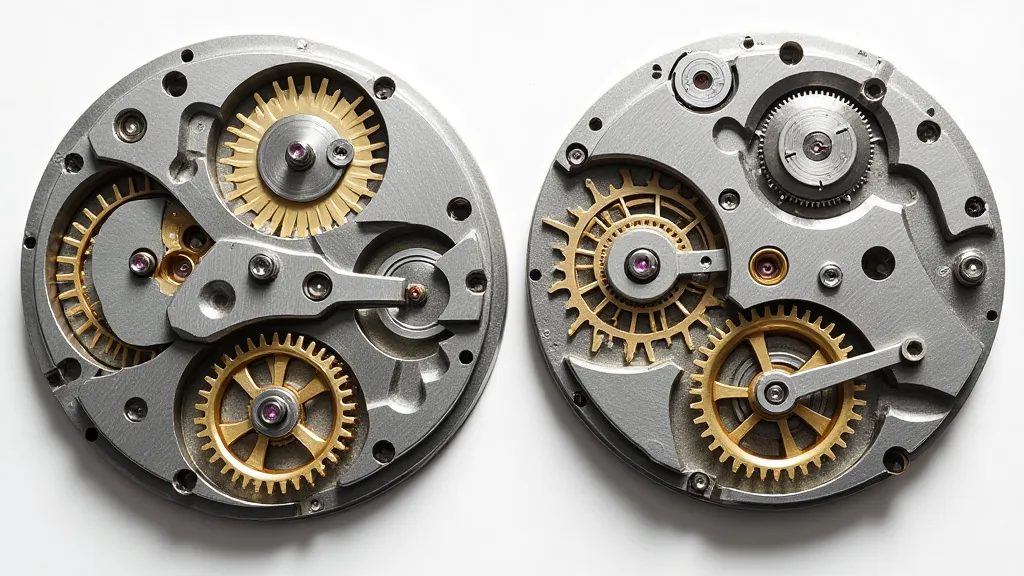
Which Movement is Right for You?
The choice between an automatic and manual-wind movement depends on individual preferences and priorities:
- For the Traditionalist: If you appreciate the ritual of winding and value a slimmer profile, a manual-wind movement is an excellent choice.
- For the Convenience Seeker: If you prefer a "set it and forget it" approach and don's want to worry about daily winding, an automatic movement is a better option.
- For the Watch Collector: Both types offer unique appeal. Manual-wind movements often represent historical significance, while automatic movements showcase engineering ingenuity. Understanding the evolution of chronograph movements, such as the Landeron calibers, illustrates the ongoing pursuit of horological innovation; those interested might find Landeron calibers particularly intriguing.
- For the Watch Repair Enthusiast: Both types offer challenges and rewards for those interested in learning the intricacies of mechanical watch repair. Manual-wind movements can be simpler to understand initially, while automatic movements present a more complex learning curve.
Maintaining Your Watch Movement
Regardless of whether you choose an automatic or manual-wind movement, regular maintenance is crucial for ensuring its longevity and accuracy. This includes:
- Servicing: Professional servicing every 3-5 years to clean, lubricate, and adjust the movement.
- Storage: Proper storage when not in use, preferably in a watch box or pouch to protect it from dust and scratches.
- Handling: Careful handling to avoid shocks and impacts that could damage the delicate components.
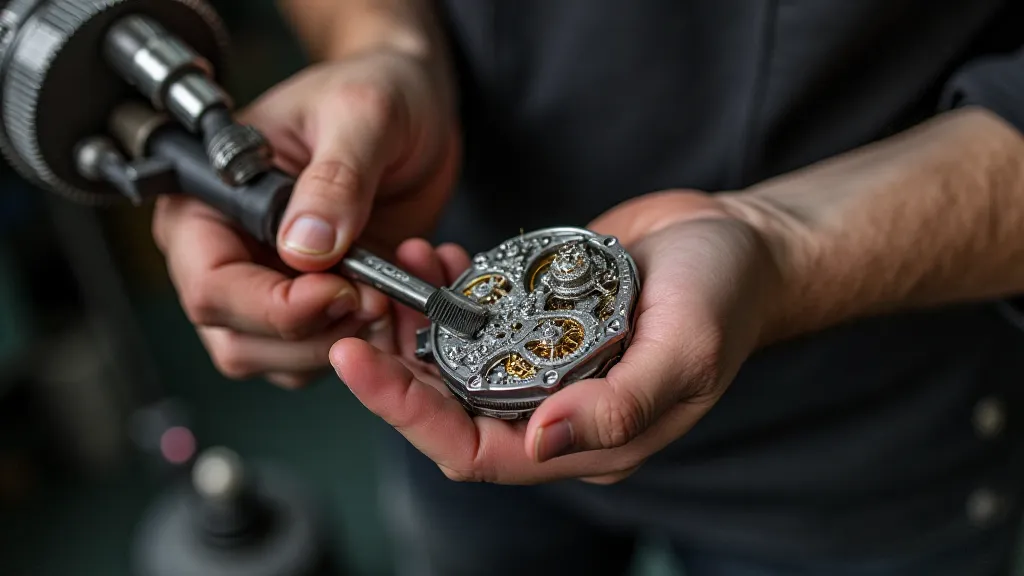
Conclusion
Both automatic and manual-wind movements represent remarkable feats of engineering and artistry. Understanding the differences between them allows watch enthusiasts to appreciate the nuances of mechanical timekeeping and make informed decisions when selecting their next timepiece. Whether you value the tradition of manual winding or the convenience of automatic operation, there is a mechanical watch movement to suit your preferences. As you delve deeper into the world of watch collecting and repair, remember that each movement tells a story—a story of innovation, craftsmanship, and the enduring legacy of mechanical timekeeping.
